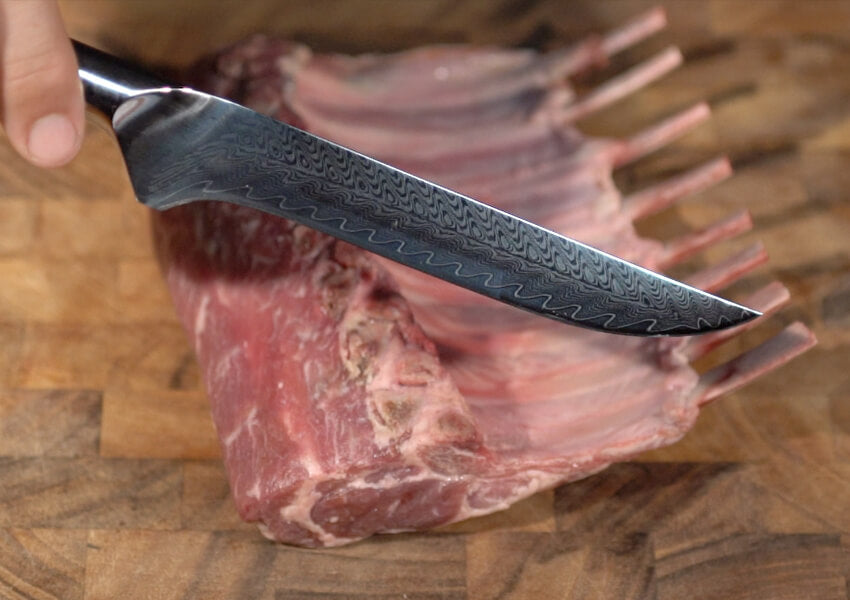In the diverse world of culinary arts, having the right tools can make all the difference. One common question that arises is, do you need a boning knife? This question is particularly relevant for both home cooks and professional chefs who seek precision in their cooking endeavors. Understanding the role and usefulness of a boning knife can enhance your kitchen experience significantly.

What is a Boning Knife?
A boning knife is a specialized kitchen tool designed for removing bones from meat, poultry, and fish. Its distinctive design typically includes a narrow, flexible blade that allows for precise cutting around bones and joints. This flexibility is what sets it apart from other types of knives, making it a valuable asset in any kitchen.
Key Features of a Boning Knife
Blade Flexibility
The blade flexibility of a boning knife is crucial for efficiently maneuvering around bones. This flexibility allows the knife to bend without breaking, ensuring clean cuts and minimizing waste.
Blade Sharpness
A sharp blade is essential for a boning knife to perform effectively. Its sharp edge allows for precise cuts, making it easier to separate meat from bones without damaging the surrounding tissue.
Handle Comfort
The comfort of the handle is another important aspect to consider when using a boning knife. A well-designed handle provides a secure grip, reducing the risk of accidents and ensuring ease of use during prolonged cutting tasks.
Types of Boning Knives
Stiff Boning Knife
Stiff boning knives are ideal for tasks that require more control and force, such as deboning larger cuts of meat. Their rigid blades provide stability, making them suitable for tougher jobs.
Flexible Boning Knife
Flexible boning knives excel in tasks that require intricate cuts and precision, such as filleting fish. Their pliable blades allow for delicate maneuvers, ensuring minimal meat wastage.
Curved Boning Knife
Featuring a curved blade, this type of boning knife is excellent for removing bones from poultry and small game. The curve helps in following the contours of the meat, ensuring clean separation.
Advantages of Using a Boning Knife
Precision and Control
A boning knife offers unmatched precision and control, allowing cooks to make clean, accurate cuts. This is especially important when working with delicate or intricate recipes.
Efficiency
With its specialized design, a boning knife enhances efficiency in the kitchen. It reduces the time and effort required to debone meats, making the cooking process more streamlined.
Versatility
Despite its name, a boning knife is a versatile tool that can be used for various tasks beyond deboning. Its sharpness and flexibility make it suitable for trimming fat, slicing thin cuts of meat, and even some vegetable preparations.
When Do You Need a Boning Knife?
Preparing Meat Dishes
Whenever a recipe calls for deboning meat or poultry, a boning knife becomes an essential tool. It ensures that the meat is separated cleanly from the bone, enhancing the final presentation of the dish. For more on using a boning knife in professional settings, see German knives in kitchens.
Filleting Fish
For those who frequently prepare fish dishes, a boning knife is invaluable. It allows for precise filleting, ensuring that the fish is clean and ready for cooking.
Trimming Fat and Skin
Beyond deboning, a boning knife is also effective for trimming unwanted fat and skin from meat. Its sharp blade makes these tasks quick and easy, improving the quality of your dishes.
Caring for Your Boning Knife
Proper Cleaning
Maintaining a boning knife involves regular cleaning. Hand wash the knife with warm soapy water and dry it immediately to prevent rust and maintain its sharpness.
Sharpening and Honing
To keep your boning knife in optimal condition, regular sharpening and honing are necessary. This ensures that the blade remains sharp and effective for all cutting tasks. More about knife maintenance can be found in knife safety tips.
Safe Storage
Store your boning knife in a knife block or magnetic strip to protect the blade and prevent accidents. Proper storage enhances the longevity of the knife and ensures safety in the kitchen.
Choosing the Right Boning Knife
Material
When selecting a boning knife, consider the material of the blade. High-carbon stainless steel is a popular choice for its strength and resistance to corrosion.
Brand Reputation
Opt for brands with a reputation for quality and reliability. Researching customer reviews and expert recommendations can guide you in making an informed decision.
Price Range
Boning knives come in various price ranges. Determine your budget and balance it with the features and quality you desire. For more guidance on selecting the right knife, refer to boning knife uses.

FAQs About Boning Knives
Why do I need a boning knife?
A boning knife is essential for precise tasks like deboning meat and fish, ensuring clean cuts and efficient preparation.
Can I use a boning knife for vegetables?
While primarily designed for meat, a boning knife can be used for certain vegetable tasks, thanks to its sharpness and precision.
How often should I sharpen my boning knife?
Regular sharpening is recommended, depending on usage. Honing after each use and sharpening when the blade dulls will maintain its effectiveness.
In conclusion, understanding the role of a boning knife in your culinary toolkit is crucial for any cooking enthusiast. Whether you’re a home cook or a professional chef, the precision, efficiency, and versatility of a boning knife make it a worthy addition to your kitchen. For more on how to incorporate different knives into your culinary practices, explore this insightful guide on cutting techniques.
This article contains affiliate links. We may earn a commission at no extra cost to you.


